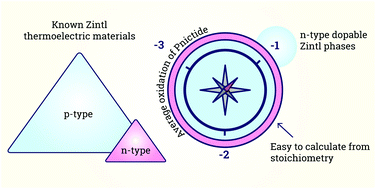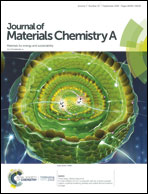A simple chemical guide for finding novel n-type dopable Zintl pnictide thermoelectric materials†
Abstract
Computations have predicted good thermoelectric performance for a number of Zintl phases when doped n-type. Combined with the successful experimental realization of n-type KGaSb4, KAlSb4, and Mg3Sb2 with zT ≳ 1, this has fueled efforts to discover novel n-type dopable Zintl phases. However, a majority of Zintl phases exhibit strong proclivity toward p-type doping and prior successes in finding n-type dopable Zintls were largely serendipitous. Herein we use modern first-principles defect calculations to study trends in the dopability of Zintl pnictides and find that the average oxidation state of the anion is a useful chemical guide to identify novel n-type dopable phases. Specifically, we observe that Zintl pnictides with average oxidation of the anion near −1 are n-type dopable. The trend is mainly a consequence of the high formation energy of native acceptor defects (e.g. cation vacancies) and the resulting absence of charge (electron) compensation. Using the oxidation state guide in conjunction with a descriptor of thermoelectric performance, we conduct a large-scale materials search and identify promising candidates that are n-type dopable.



 Please wait while we load your content...
Please wait while we load your content...